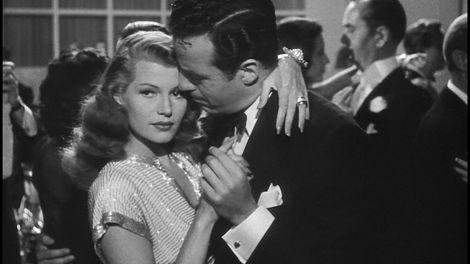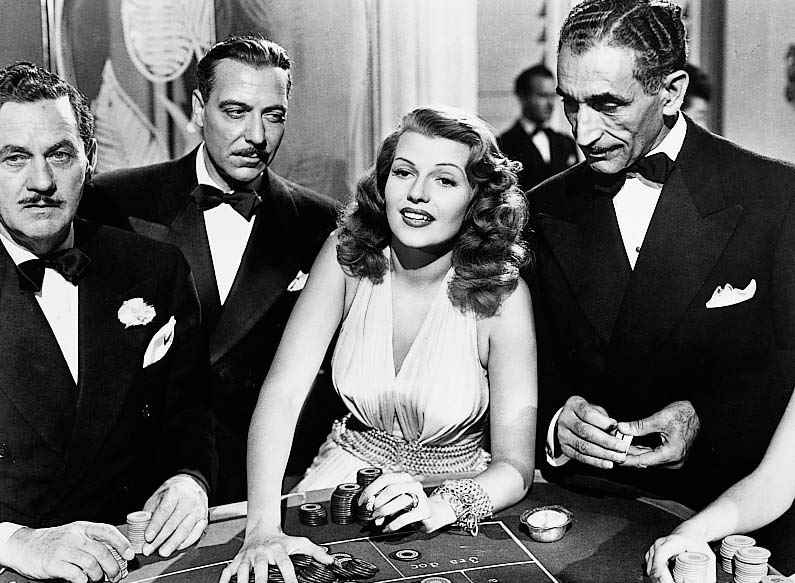Gilda
PGThis won’t be news to you but sex sells, and cinema is no different. Ever since its inception, it has promoted sexuality through female performers, from the likes of Clara Bow, who was tagged the “it girl” during the silent era, right up to today.
The forties saw its fair share of screen idols created, with the war playing its part, and the number one pin-up gal of the era was none other than Rita Hayworth.
As Madonna declared in her classic “Vogue”, “Rita Hayworth gave good face”, and she arguably gave none better than in this classic 1946 film noir opposite Glenn Ford.

Hmm the buffet's up and running...
Down on his luck in Buenos Aires is Johnny (Ford). He makes the mistake of gambling with a bunch of sailors and winning big, which makes a number of them disgruntled, so much so that they decide to make their feelings known to him outside. Thankfully they are interrupted by Ballin Mundson (George Macready), who essentially saves his life. He warns Johnny about hustling in this part of the world and they go their separate ways.
But when Johnny ends up in a local casino, where he once again pushes his luck at the tables, he meets Ballin once again, who soon informs him that he owns the joint. Ballin sees potential in Johnny however and hires him to manage the casino.
The two soon become very good friends, with Johnny indebted to him for his help.
One day Ballin brings a woman into the equation, a dancer by the name of Gilda (Hayworth), and he’s keen for Johnny to meet her. And they do, but it doesn’t go well, as Ballin senses there’s some tension between the two, as they clearly don’t get on.
What Ballin doesn’t know is that the two of them have history, and Johnny knows that there can only be trouble on the horizon for all of them.

You better get me a cushion too, I'm going to be here a while.
If anyone epitomises the characteristics of a femme fatale it’s Hayworth in this film. She is the Achilles heel of not just Johnny and Ballin in the film , but all of mankind. She is the three S’s – sultry, sassy and sexy – and it’s a deadly combo than no man can resist.
It was a role that was to have a huge impact on Hayworth’s life, none more so than the long-lasting relationship she had with her co-star Ford that lasted into her eighties.
But it’s also a role that came with a fair amount of emotional baggage too; she once said “Men go to bed with Gilda, but wake up with me”, which Richard Curtis borrowed for a line for Julia Roberts in Notting Hill.
It’s no wonder Hayworth felt that way, as director Charles Vidor created a lasting screen siren who still manages to captivate.
But there’s more to the film than that. There’s also a subtext of a relationship between Johnny and Ballin too. In fact for most of it, Johnny is more concerned about Ballin’s feelings, doing whatever he can to control Gilda – who cannot be tamed, as he well knows – so that his boss and friend doesn’t get hurt.
And although much of the dialogue is some of the best examples of film noir, the narrative doesn’t quite hold up as well all these years on, with the story of Ballin being the head of a cartel for tungsten just a little on the obscure side; sure the whole world needs bulbs, you just think a cartel would dream bigger . But the truth is, when you have Hayworth giving such a tour de force performance, it really doesn’t matter.
And it even got a mention in an episode of The Penguin, such is its longevity as a classic, when the song “Put the Blame on Mame” sung by Hayworth was not only featured, but the film name checked by Oz himself.
Like the poster exclaimed “there never was a woman like Gilda!”.
